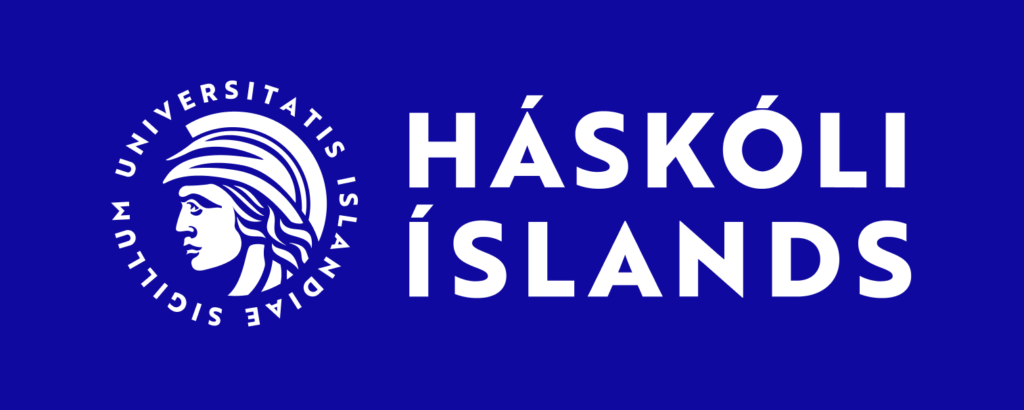Fyrirlestrar / Lectures
Forn kveðskapur norrænn og bragarhættir
— Old Norse Poetry and Metrics
Málþing á vegum Miðaldastofu Háskóla Íslands — A University of Iceland Centre for Medieval Studies Symposium
Laugardaginn 21. júní 2025 kl. 14.00-17.00 — Saturday, June 21, 2025, at 14.00-17.00
Fyrirlestrasal Eddu (E103) — Edda auditorium (E103)
Dagskrá — Programme:
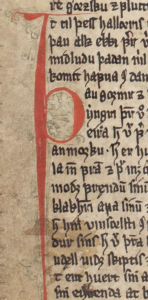 14.00–14.30 Gudrun M. J. Samberger, Würzburg University: Nominal Word Formation in the Poetic Edda (GKS 2365 4to): The influence of metrics on etymology
14.00–14.30 Gudrun M. J. Samberger, Würzburg University: Nominal Word Formation in the Poetic Edda (GKS 2365 4to): The influence of metrics on etymology
14.30–15.00 Haukur Þorgeirsson, Árni Magnússon Institute: Cohesion in Germanic poetry
15.00–15.30 Bianca Patria, University of Oslo: Nýtask mér máltól: Allusive Art and Exegetical Thought in Einarr Skúlason’s Geisli
15.30–16.00 Kaffihlé — Coffee Break
16.00–16.30 Klaus Johan Myrvoll, University of Stavanger: The poetry of Gunnlaugs saga: a late thirteenth century patchwork?
16.30–17.00 Mikael Males, University of Oslo: How old are the oldest eddica minora?
Málþingið fer fram á ensku og er öllum opið. — The symposium will be conducted in English. All are welcome to attend.
Miðaldastofa Háskóla Íslands — The University of Iceland Centre for Medieval Studies
—o—o—o—
Gudrun M. J. Samberger
Nominal Word Formation in the Poetic Edda (GKS 2365 4to): The influence of metrics on etymology

This talk presents findings from my PhD thesis on nominal word formation in the Poetic Edda (GKS 2365 4to), focusing on the nominal suffix Proto-Germanic *-wandja- and its unique history in Old Norse, as well as related suffixes. My project explores nominal word formation through the study of etymologies of nouns containing the relevant suffixes. These studies lead to a deeper understanding of the function and semantics of the suffixes in question.
In the initiation of a study of etymologies in a corpus, it is imperative to first discern general nouns from other words that have undergone nominalisation in context. In some suffixes, such as the -nd-suffix that is attested in nouns of Proto-Germanic origins as well as in present participles that can be more recent formations, consideration of the literary context is necessary to differentiate ad-hoc formations from older nouns that may have been substantivized adjectives at some point. When studying corpora composed of metrical texts, considering the metrics of the attestation context plays a vital role for the interpretation of a word’s etymology.
An illustrative example is the case of gróandi. This noun is attested in Alvíssmál 10,5 only. Alvíssmál is a dialogue poem, almost entirely composed in ljóðaháttr. In stanza 9, Þór asks the dwarf Alvíss for the name of the earth used by different species. Alvíss answers (Alv. 10):
Jörð heitir með mönnum
En með álfum fold,
kalla vega vanir,
ígræn jötnar,
álfar gróandi,
kalla aur uppregin.
In this verse, due to the metre, gróandi must be a three-syllable noun that can denote the earth. The noun is transparently formed by building a present participle from gróa ‘to grow’ which is then nominalized. It is also conceivable that this may be a noun that has already been lexicalised. Nevertheless, several arguments suggest that the formation was ad-hoc: 1. The noun is not attested anywhere else with the same meaning. 2. In contemporary Icelandic, the noun gróandi does not continue the meaning ‘earth’ but rather means ‘growth period’. 3. In this particular context, gróandi is the form of a feminine participle, while nominal formations with -nd- are masculine within Old Norse (Noreen 1923: 287, 297).
Considering the metrics, therefore, informs the researcher if a specific word appears as a result of metric requirements which would make it liable to neologism. It is a fundamental step of philological work to establish the study material within a given project.
Gudrun M. J. Samberger has a master’s degree in Indo-European Studies awarded by the University of Marburg, Germany. She is a PhD student in Comparative Historical Linguistics at Würzburg University. Within her PhD project, she researches Nominal Word Formation within the Poetic Edda, specifically formations with the wandja-suffix.
—o—
Haukur Þorgeirsson
Cohesion in Germanic poetry

In quantity-based poetry, the length or weight of the final syllable of a word may be affected by the onset of the following word, a phenomenon sometimes referred to as cohesion. This principle applies uncontroversially to Greek, Latin and Vedic metrics. It is, however, a more difficult question whether or to what extent it applies to Germanic poetry. Eduard Sievers concluded that it did not, pointing to a number of examples where monosyllabic words occupy a strong position within a line of poetry without apparent regard for the onset of the following word. As an example, the skaldic poem Vellekla has the line “mannfall við styr annan” where the word styr needs to form a heavy syllable despite its short vowel and single consonant in the coda. Later, Hans Kuhn discovered a possible explanation for many lines of this type.
This paper presents a new study of cohesion in Old Norse and Old English poetry and explores the implications of the data for textual criticism, historical phonology and comparative metrics.
Haukur Þorgeirsson is research professor at the Árni Magnússon Institute for Icelandic studies. His interests include Old Norse and later Icelandic poetry, historical linguistics, and metrics.
—o—
Bianca Patria
Nýtask mér máltól: Allusive Art and Exegetical Thought in Einarr Skúlason’s Geisli

In the poem Geisli, Einarr Skúlason’s majestic drápa for Saint Óláfr composed c. 1152, traditional dróttkvæði meets Christian poetry in Latin, inaugurating a new era in skaldic composition. As scholars have previously noticed, some passages in this poem contain echoes of early, pagan skaldic verse, but, at the same time, they appear to be infused with theological resonances. This talk will illustrate three instances of this phenomenon, arguing that the poetic allusions in Geisli reveal an allegorical and, precisely, exegetical reading of the pre-Christian matter of early Norse poetry. Einarr Skúlason’s allusive art finds conceptual parallels in the contemporary theological reflection and discloses the doctrinal underpinnings of the renovation of the skaldic genre in the course of the twelfth century.
Bianca Patria is a postdoctoral fellow in Old Norse philology at the Unviersity of Oslo, where she obtained her PhD in 2021. Her research focuses on intertextual phenomena in Old Norse poetry, skaldic diction and Germanic metrics.
—o—
Klaus Johan Myrvoll
The poetry of Gunnlaugs saga: a late thirteenth century patchwork?
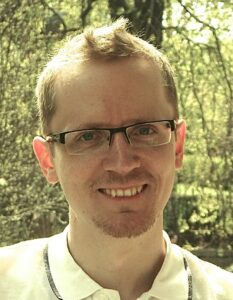
The sagas of Icelanders can be divided into three groups according to the extent of authentic poetry they contain (cf. Myrvoll in SkP V, 2022): early sagas with mainly authentic poetry, late sagas with mainly spurious poetry but some elements of authentic poetry, and late sagas with poetry of approximately the same date as the written saga. Of the middle group, Gunnlaugs saga stands out as a particularly problematic case. The twenty-five stanzas of the saga include parts of two encomiastic poems, one stanza of the so-called Gunnlaugsdrápa ormstungu, attributed to Þórðr Kolbeinsson, and a total of twenty lausavísur. The most intensive debate has concerned the situational stanzas, and opinions about them have shifted. Except for one stanza identical with a stanza from Kormáks saga and two stanzas uttered by dead persons, Finnur Jónsson (1920–24) accepted all as authentic productions of Gunnlaugr and his contemporaries. Most scholars have, however, been more sceptical, including Björn Magnússon Ólsen (1911), Russell Poole (1981) and Kari Ellen Gade (2001). Gade points out many resemblances between the stanzas of Gunnlaugs saga and poetry by other skalds, among them Gísli Súrsson, Kormákr and Hallfrøðr vandræðaskáld. These echoes of more securely attested poets may indicate that much of the poetry of Gunnlaugs saga is in fact made for the saga, with the combination of earlier materials to make new stanzas being one of the saga poet’s main strategies. This lecture will explore this strategy in some detail and at the same time try to distil what authentic poetry there still may be in the saga.
Klaus Johan Myrvoll is professor of Nordic linguistics at the University of Stavanger, and as of this autumn, associate professor in Nordic medieval philology at the Arnamagnæan Institute, University of Copenhagen. His research focuses on Old Norse poetry and metrics, textual history and manuscript transmission as well as Nordic language history from all periods, including the study of names and runic inscriptions.
—o—
Mikael Males
How old are the oldest eddica minora?

Eddic poetry in the legendary sagas, the so-called eddica minora, is mostly considered to be young. The main exception is Hlǫðskviða or The Battle of the Goths and the Huns in Hervarar saga. This poem is thought to be early, perhaps even to be the earliest eddic poem of all. Some poetry in Ǫrvar-Odds saga and Ásmundar saga kappabana is also thought to be potentially old.
A study by Haukur Þorgeirsson in 2012 presents counterindications to the consensus view on Hlǫðskviða, suggesting that the question needs to be reopened. This talk explores additional features. On closer inspection, Hlǫðskviða contains both metrical and semantic indications of late composition. Still, a few stanzas may well be old. This invites us to investigate an alternative scenario, which will here be fleshed out through comparison with Ǫrvar-Odds saga and Ásmundar saga kappabana. I will suggest that the “all or nothing” approach of previous scholarship, according to which a poem is either young or old, does not reflect the actual production process of some of the poetry contained in early legendary sagas. Rather, it would seem that a very limited amount of early poetry was known and considerably expanded in the creation of primarily poetic “proto-sagas”, a lost intermediary between earlier purely poetic and later saga form. Like so many other transitional evolutionary stages, this one is lost to us, but it can be detected through a chronological stratigraphy of preserved sagas, as well as through comparison to Saxo. By so doing, crucial components in the development of the genre of the legendary sagas emerge.
Mikael Males is professor of Old Norse philology at the University of Oslo. He has published mainly on skaldic poetry and grammatical literature, but also on eddic poetry, saga literature and Irish-Norse influence.
—o—
Málþingið fer fram á ensku og er öllum opið.
The symposium will be conducted in English. All are welcome to attend.
Miðaldastofa Háskóla Íslands — The University of Iceland Centre for Medieval Studies
Fyrirlestrar / Lectures
Jonathan L. Ready
The Homeric Wild Papyri and Scribal Performance
Mánudaginn 16. júní 2025 kl. 15.00 / Monday, June 16, 2025, at 15.00
Fyrirlestrasal Eddu (E-103) / Edda auditorium (E-103)

The scribal act of copying an exemplar needs to be understood as a performance. Building on linguistic anthropology’s study of oral performers, my contribution resides in explaining what scribal performance entails. I use the Hellenistic-era wild papyri of the Homeric epics to show how scribal performance involves (1) entextualizing; (2) aiming for completeness; (3) enhancing a text’s affective power; (4) operating as a tradent as well as traditionalizing; (5) negotiating an intertextual gap; (6) fashioning a bookroll; and (7) adopting a stance toward one’s work.
Jonathan L. Ready is a professor of classical studies at the University of Michigan. His most recent monograph is titled Immersion, Identification, and the Iliad (Oxford 2023). His current book project has the working title Euripides’s Orestes and Post-Critique.
Fyrirlesturinn verður haldinn á ensku og er öllum opinn. / The talk will be delivered in English and is open to all.
Fyrirlestrar / Lectures
Gareth Lloyd Evans, Brynja Þorgeirsdóttir, Carolyne Larrington et al.
Saga Emotions
A Joint Lecture on Feelings in Old Norse Literature
Fimmtudaginn 12. júní 2025 kl. 16.00 / Thursday, June 12, 2025, at 16.00
Oddi 101
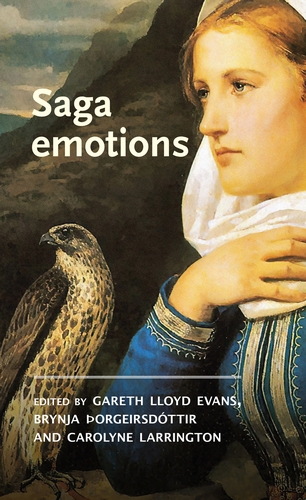 How were emotions expressed in Old Norse literary texts? How can we trace the feelings of the past in sagas written centuries ago? This joint lecture explores these questions and more, marking the launch of Saga Emotions, a new academic volume that challenges and enriches our understanding of emotion in Old Norse literature.
How were emotions expressed in Old Norse literary texts? How can we trace the feelings of the past in sagas written centuries ago? This joint lecture explores these questions and more, marking the launch of Saga Emotions, a new academic volume that challenges and enriches our understanding of emotion in Old Norse literature.
The book investigates how emotions are represented in Old Norse literary texts, laying a particular emphasis on those genres which are regarded as quasi-historical or naturalistic. It engages with a broad range of individual emotions through close lexical examination and analysis of case-studies across a range of saga genres. The fundamentally lexemic approach is intended to grapple with the methodological issues raised by using modern emotion terms to interpret medieval texts, which risks forcing the material into preconceived and possibly anachronistic categories. In taking this approach, and by ranging beyond the better-known Íslendingasögur (sagas of Icelanders) also to consider samtíðarsögur (contemporary sagas), konungasögur (kings’ sagas), and biskupasögur (sagas of bishops) alongside other religious texts, the book reconfigures the field of emotion study in Old Norse literature. Saga Emotions is the first book to take this kind of systematic approach to Old Norse prose literature. As each chapter takes its cue from a particular Old Norse word or set of words with demonstrable emotional connotations, the book aims to bring rigour to, and to interrogate, the assumptions with which modern readers analyse these often profoundly strange medieval texts. The aim is to alert readers to emotion that is implicit or understated, and to warn against imposing modern and anglophone taxonomies on literary works that originate in a very different textual culture and social milieu.
The lecture begins with a keynote by editor Carolyne Larrington, University of Oxford, outlining the book’s main findings and approaches. This is followed by brief “lightning talks” from contributors, each showcasing key insights into how emotions like anger, grief, love, and joy appear in the medieval saga world.
- Secular love – Sif Rikhardsdottir, University of Iceland
- Going berserk and the killing mood – Gareth Lloyd Evans, University of Oxford
- Sadness – Edel Maria Porter, University of Castilla-La Mancha
- Compassion – Ásdís Egilsdóttir, University of Iceland
- Desire – Alexander Wilson, University of Leicester
- Grief – Kristen Mills, University of Oslo
- Disgust – Rebecca Merkelbach, University of Tübingen
- Pride – Katherine Olley, University of Nottingham
- Anger – George Manning, University of Oxford
- Shame – Brynja Þorgeirsdóttir, University of Iceland
The event will conclude with an open discussion, offering the audience a chance to engage with the speakers and reflect on the relevance of medieval emotional worlds to our own.
The editors of Saga emotions are:
- Gareth Lloyd Evans, Associate Professor of Old Norse at the University of Oxford.
- Brynja Þorgeirsdóttir, Assistant Professor of Icelandic Literature at the University of Iceland.
- Carolyne Larrington, Emeritus Professor of Medieval European Literature at the University of Oxford.
Fyrirlestrarnir verða haldnir á ensku og eru öllum opnir. / The talks will be delivered in English and are open to all.
Fyrirlestrar / Lectures
Miðvikudaginn 11. júní 2025 heldur Alban Gautier, prófessor í miðaldasögu við Université de Caen Normandie, tvo fyrirlestra á vegum Miðaldastofu — / — Wednesday, June 11, 2025, Alban Gautier, professor of medieval history at Université de Caen Normandie, will give two talks for the Centre for Medieval Studies:
Alban Gautier
The ‘Massacre of the Long Knives’: transformations of a narrative from the ninth to the thirteenth century
Miðvikudaginn 11. júní 2025 kl. 11.00 / Wednesday, June 11, 2025, at 11.00
Árnagarður 304
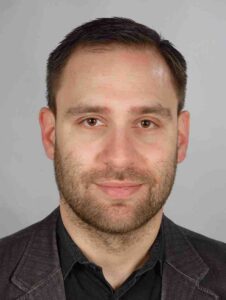
A story first appearing in the Historia Brittonum traditionally ascribed to Nennius (early ninth century) tells how, after the Saxons led by Hengest first arrived in Britain, they invited all British noblemen to meet them: in the course of the meeting, the Saxons drew their knives and each one killed his neighbour. I will retrace the transformation of this narrative over five centuries, showing how it was retold and modified in history, pseudo-history and romance, and in a variety of European languages. The most important turning point here was undoubtedly Geoffrey of Monmouth and his History of the Kings of Britain: after him, nearly all versions, from Wace’s Roman de Brut to Breta sögur, drew some inspiration from his version, still modifying it, adding or removing individual details.
Alban Gautier is professor of medieval history at Université de Caen Normandie. His research focuses on Norse culture of the Viking Age where he has researched the roots of the concept of the “noble heathen” which appears in medieval Icelandic literature. In his book Beowulf au paradis: Figures de bons païens dans l’Europe du Nord au haut Moyen-Âge (Éditions de la Sorbonne, 2017), Gautier traces the origins of this concept to the writings of medieval theologians and offers a new interpretation of Beowulf.
Fyrirlesturinn verður haldinn á ensku og er öllum opinn. / The talk will be delivered in English and is open to all.
—o—o—o—
Alban Gautier
‘Righteous heathens’ before the age of sagas: did something change in the early twelfth century?
Miðvikudaginn 11. júní 2025 kl. 15.00 / Wednesday, June 11, 2025, at 15.00
Árnagarður 304

The notion of the ‘righteous heathen’ or ‘good pagan’ is well-known from Icelandic sagas. There abundance in North European written narratives about the pre-Christian past seems to start sometime in the first half of the twelfth century, when so-called ‘national historians’ such as ‘Gallus Anonymus’ in Poland, Cosmas of Prague in Bohemia or Geoffrey of Monmouth in Britain tell long stories about rulers from the pagan past, celebrating their virtues and their achievements. I will show that, before this date, such stories were not inexistant in the North, but were limited to some regions (especially Ireland) and to a few notable individuals (a handful of them being even regarded as possibly admitted to Paradise). So did something change in the early twelfh century, that made such stories more acceptable for writers that were no less Christian and no less clerical than their predecessors?
Alban Gautier is professor of medieval history at Université de Caen Normandie. His research focuses on Norse culture of the Viking Age where he has researched the roots of the concept of the “noble heathen” which appears in medieval Icelandic literature. In his book Beowulf au paradis: Figures de bons païens dans l’Europe du Nord au haut Moyen-Âge (Éditions de la Sorbonne, 2017), Gautier traces the origins of this concept to the writings of medieval theologians and offers a new interpretation of Beowulf.
Fyrirlesturinn verður haldinn á ensku og er öllum opinn. / The talk will be delivered in English and is open to all.
Fyrirlestrar / Lectures
Declan Taggart
“Tired of a warm boudoir and gloves filled with down”
The construction of Viking Age warrior identity
Þriðjudaginn 8. apríl 2025 kl. 16.30 / Tuesday, April 8, 2025, at 16.30
Fyrirlestrasal Eddu (E-103) / Edda auditorium (E-103)

Warriors remain a cultural staple across the globe, from kids playing with fingers for guns to the blood and guts of Gladiator and videogames like Elden Ring. That does not mean, however, that warrior identity is a straightforward topic for scholars, and this is as true for the Viking Age as for any other period in history. To put it simply, while many people can fight, not everyone who fights is a warrior. No word in Old Norse can even be said to unambiguously equate to the concept, although there are several that we can associate with it.
What, then, is a Viking Age warrior? The goal of this paper is to determine and elucidate that identity, exploring how it was constructed, maintained and propagated, and examining how it was perceived by and affected others in society, a dimension of warriorhood that is rarely considered. To do so, I turn to the archaeological, iconographic and textual sources of Scandinavia and its diaspora to see how warriorhood intersected with seemingly incongruous concepts like nobility and subservience, with religion and physical presentation, with the landscape, and with activities like sailing, showing off and, of course, violence.
While I will touch on and challenge previous arguments about the aesthetics, beliefs and values of the Männerbunde, Gefolgschaft or comitatus, as warrior groups have not-unproblematically been called over the last two hundred years of research, my main focus will be on the primary sources. Understandably, given the fragmentary nature of that corpus, many conclusions about early Northern warrior groups rely on evidence that is neither Viking Age nor from or about the Nordic countries. However, by concentrating on the primary source material, I hope to offer a reasonable reconsideration of how much it is really possible to say about early warrior identity as well as, ultimately, how valid the correlation is between the modern concept of the warrior and any in an Old Norse society.
Declan Taggart is a researcher at the University of Iceland working on warrior groups and their relationship with society. His wider interests include Old Norse mythology and religion, and he has published a book on change in representations of the god Þórr called How Thor Lost His Thunder (Routledge, 2018).
Fyrirlesturinn verður haldinn á ensku og er öllum opinn. / The talk will be delivered in English and is open to all.
—o—o—o—
Fyrirlestrar / Lectures
Holly McArthur
A New Critical Edition of Flóvents saga
Þriðjudaginn 1. apríl 2025 kl. 16.30 / Tuesday, April 1, 2025, at 16.30
Fyrirlestrasal Eddu (E-103) / Edda auditorium (E-103)
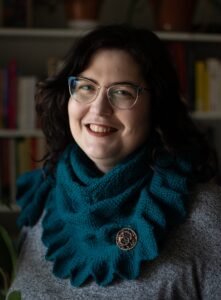
A little-known work, Flóvents saga claims to tell the story of the first Christian king of Frakkland. Translated from a now-lost chanson de geste, it survives today in 23 manuscripts with the oldest dating from the first quarter of the fourteenth century. Moreover, Flóvents saga has the (perhaps dubious) honor of being the oldest surviving relative of its particular branch of stories of Flóvent, the nephew of Constantine, connecting the narrative to epic cycles produced in Italian and German in the late medieval and early modern periods.
Despite the saga’s relative popularity in Iceland through the centuries, it was last edited in 1884, by Swedish philologist Gustaf Cederschiöld, who, as might be expected of nineteenth century philological practice, dismissed younger copies of the text, and was seemingly unaware of a major part of the saga’s transmission history.
This presentation will focus on the questions that underly a new critical edition of Flóvents saga, with particular attention paid to the balance between authenticity and accessibility, and the question of how best represent a text that holds a relatively unique place for both Old Norse and medieval European literature. It does so in light of the saga’s manuscript rich tradition which spanned almost to the twentieth century to illuminate the role of Flóvent both in Iceland and in Europe.
Holly McArthur is a 2024–2025 Leifur Eiríksson fellow and a Ph.D. Candidate in Scandinavian Philology at the University of Wisconsin–Madison. She holds an MA in Viking and Medieval Norse Studies from the University of Iceland (2019). Her work studies cultural transmission and literary translation between Old French and Old Norse-Icelandic.

